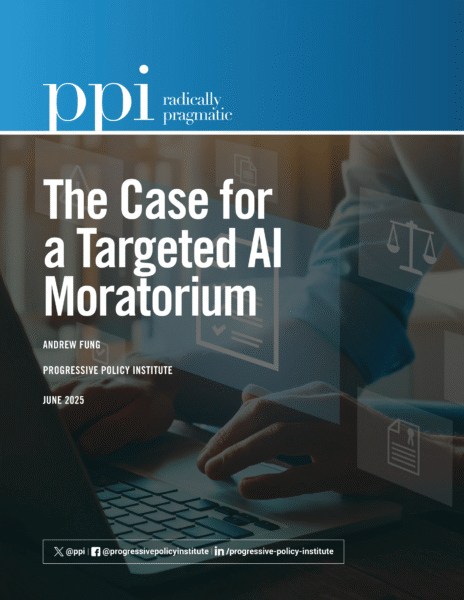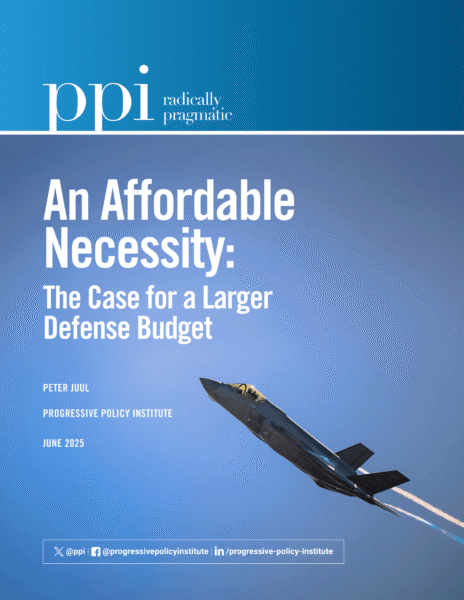FACT: 65 million of America’s 80 million hourly-wage workers are in “services.”
THE NUMBERS: Americans at work, 2024* –
| 2024 | Change 2018/2024 | |
| Total employed | 161.35 million | +5.59 million |
| Salaried and other non-wage workers | 81.00 million | +6.51 million |
| Hourly-wage workers | 80.35 million | -0.92 million |
| … hourly-wage in health | 12.90 million | +0.54 million |
| … hourly-wage in retail | 10.86 million | -0.44 million |
| … hourly-wage in manufacturing | 8.45 million | -0.96 million |
| … hourly-wage in restaurants | 7.26 million | -0.07 million |
| … hourly-wage in construction | 5.62 million | +0.12 million |
* Bureau of Labor Statistics, Current Population Survey.
WHAT THEY MEAN:
The paradox at the core of the Trump administration’s tariff decrees: for American working life to improve, they argue, working-class living standards must fall. (Three TVs are too many for a working family, two dolls per girl should be enough, no price would be too high for locally-made toasters, etc.) Put more sympathetically, the administration’s claim is that while tariffs raise prices for families, they will offset this by shifting workers out of their current jobs into factories.
This may or may not be what workers actually want — as PPI President Will Marshall noted last week, polling suggests workers look more to tech industries than factories for next-generation jobs. Either way, seven years of experience with Mr. Trump’s first-term tariffs (imposed from early 2018 to late 2019), and several months’ experience with this spring’s larger decrees, provide some evidence as to whether tariffs actually do this. Two definitions, then the data from the Bureau of Labor Statistics:
Working Americans: According to the BLS, 161.4 million Americans were employed last year. Half of them, 80.35 million, earned their income in hourly wages. (As opposed to annual salaries, executive profit-sharing arrangements, investments, professional fees, etc..) About 80% of hourly-wage Americans — 65 million of the 80.35 million— work in “services” jobs: waiting tables, stocking grocery shelves, replacing brake-pads, trimming hair, cleaning halls, and running hospital admissions desks. The other 20%, 15.3 million people, are in “industrial” or “goods-producing” work in factories, farms, construction sites, mines, and logging and fishing jobs. Here’s a rundown with some more detail:
|
* “Other services” is a miscellaneous BLS category including personal care work such as hair salons and beauty parlors, repair shops, dry-cleaning and laundry, funeral homes, non-profits, and others.
Tariffs: Tariffs are taxes on purchases of goods (whether consumer products, raw materials, or industrial inputs) from a foreign supplier. Their effects on goods-producing industries and their employees are complex: they give some manufacturers, mining companies, and farmers “protection” from foreign competition, harm others by raising production costs and diminishing exports, and give many a confusing mix of both things. But for workers in the services industries — again, seven eight hourly-wage workers in every eight — tariffs just mean higher prices.
If the administration is right, new opportunities in factory jobs might offset some of their losses. But since there are so many more workers in services than goods production, it would take lots of job-shifting for working America to gain on net. And in fact we aren’t seeing any such job shifting at all — since 2018, hourly-wage manufacturing employment has been at best flat and has more likely shrunk. Three perspectives from the BLS, on total employment, job openings, and hourly-wage jobs:
(a) Manufacturing employment been flat since 2018, and down 88,000 this year. BLS’ monthly “Employment Situation” reports found about 12.7 million manufacturing workers in 2018. This was about 1.2 million above the 11.5 million jobs at the financial-crisis low in early 2010, reflecting slow but steady growth during and just after the Obama administration. In 2024, they found 12.8 million manufacturing jobs, suggesting that job creation had slowed. The most recent report, for May 2025, is once again at 12.7 million, down 88,000 over the past year with losses concentrated in metal-using industries such as farm equipment, auto parts, and machinery.
(b) Fewer open manufacturing jobs: A second BLS survey, “Job Openings and Labor Turnover”, reported about 500,000 open factory jobs at any given time in 2023 and 2024. The precise figure for January 2025, just before Mr. Trump’s first 2025 tariff decree, was 513,000 open jobs. Since then, job openings have contracted each month, to 381,000 in May. Except for three anomalous pandemic months in early 2020, this is the smallest number of open jobs in eight years.
(c) Fewer hourly-wage manufacturing jobs, but more salaried manufacturing jobs. Within manufacturing, meanwhile, companies appear to be hiring more very high-skill employees and fewer line-type workers. BLS’ annual “Current Population Survey” (which counts differently and gets somewhat larger numbers) reports a net loss of 700,000 manufacturing jobs from 2018 to 2024, from 15.7 million to 15.0 million. Within this overall total, hourly-wage work has fallen sharply — down nearly a million, from 9.41 million to 8.45 million jobs — but salaried and other non-wage employment has grown by nearly 300,000. This suggests structural change, with factories relying relatively less on human labor, and relatively more on computers, robots, and human experts such as engineers and software professionals.
So: Lots of factors affect employment, and disentangling the effects of the post-2018 tariffs from those of business cycle fluctuations, technological change, the COVID-19 pandemic, and other things isn’t easy. But the last decade’s experience gives little credence to administration arguments that higher tariffs mean more manufacturing work. Calling the claim “fool’s gold,” Marshall has a different approach, amplified last week by an in-depth paper from PPI’s Deanna Ross and Bruno Manno on apprenticeships and skill development. That is, recognize the premium businesses of all kinds are placing on expertise, understand that college degrees shouldn’t always be needed for these jobs, and help non-college workers qualify for the higher-skill jobs (in any industry) where most hiring seems to be going on:
“[A] new national commitment to guaranteeing ‘high skills for all.’ Non-college Americans, a majority of the electorate, need a more robust alternative to college: A post-secondary system of work-study opportunities that enable young people to get in-demand skills, credentials, and work experience quickly and affordably.”
FURTHER READING
PPI’s four principles for response to tariffs and economic isolationism:
- Defend the Constitution and oppose rule by decree;
- Connect tariff policy to growth, work, prices and family budgets, and living standards;
- Stand by America’s neighbors and allies;
- Offer a positive alternative.
PPI on workers, career paths, and better non-college opportunities:
PPI President Will Marshall on workers, job aspirations, the error in promising more factory jobs, and the right path for policy.
Out on June 12, Director of Workforce Development Policy Deanna Ross and Senior Advisor Bruno Manno on apprenticeships, alternatives to college, and opportunity for non-college workers.
And PPI’s poll of non-college Americans last year, with material on jobs, trade, politics, foreign affairs, and more.
Data:
The Bureau of Labor Statistics’ database.
… their monthly “Employment Situation” reports.
… annual summaries from the Current Population Survey.
… and the Job Openings and Labor Turnover survey, with tallies of monthly and annual job openings, hiring, layoffs, and quits.
Public opinion:
Bowling Green State University has a late-April look at opinion in Ohio, with agreements and divergences among Ohioans vis-à-vis tariffs:
“Tariffs and the U.S. as a country”: Asked about the effect of Mr. Trump’s tariffs on the United States as a whole, respondents with and without college degrees differed. Those with college degrees thought the effects negative by 55%-34%. Non-college Ohioans split more evenly: 46% thought tariffs would hurt the country, and 40% that they would help.
“Tariffs and people like me”: This gap nearly closed when the question turned to personal impact. College-educated views didn’t change much: 56% said the tariffs would “hurt” them, and 24% thought tariffs would “help,” and 20% were unsure. Non-college Ohioans were almost as pessimistic — that is, far more likely to say that tariffs would hurt them individually than that they would be bad for the country — with 48% believing tariffs would “hurt” them and only 27% “help,” while 27% weren’t sure.
Union households: Respondents in labor union households were especially negative: 62% thought the tariffs would hurt them, and only 21% thought they would help.
ABOUT ED
Ed Gresser is Vice President and Director for Trade and Global Markets at PPI.
Ed returns to PPI after working for the think tank from 2001-2011. He most recently served as the Assistant U.S. Trade Representative for Trade Policy and Economics at the Office of the United States Trade Representative (USTR). In this position, he led USTR’s economic research unit from 2015-2021, and chaired the 21-agency Trade Policy Staff Committee.
Ed began his career on Capitol Hill before serving USTR as Policy Advisor to USTR Charlene Barshefsky from 1998 to 2001. He then led PPI’s Trade and Global Markets Project from 2001 to 2011. After PPI, he co-founded and directed the independent think tank Progressive Economy until rejoining USTR in 2015. In 2013, the Washington International Trade Association presented him with its Lighthouse Award, awarded annually to an individual or group for significant contributions to trade policy.
Ed is the author of Freedom from Want: American Liberalism and the Global Economy (2007). He has published in a variety of journals and newspapers, and his research has been cited by leading academics and international organizations including the WTO, World Bank, and International Monetary Fund. He is a graduate of Stanford University and holds a Master’s Degree in International Affairs from Columbia Universities and a certificate from the Averell Harriman Institute for Advanced Study of the Soviet Union.






